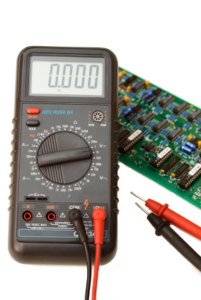 Who is NIST and what do they do?
Who is NIST and what do they do?
NIST traceable calibration is an assurance program that certifies that a laboratory or manufacturer is fully equipped to calibrate equipment to the National Institute of Standards and Technology (NIST) standards and that any products offered by that manufacturer will match those NIST-maintained measurement standards. It means that the thermometer was calibrated against a NIST-approved reference thermometer.
NIST is a non-regulatory federal agency founded in 1901 within the U.S. Commerce Department’s Technology Administration whose mission is to develop and promote measurement, standards, and technologies to enhance productivity, facilitate trade, and improve the quality of life of Americans. With NIST traceable calibration, any measurements taken with a certified thermometer will have:
- An unbroken chain of measurements that leads back to NIST maintained standards.
- Known and documented uncertainties for each step in the chain.
- A quality assurance system in place to maintain that measurement uncertainty.
Since almost every application requires temperature measurements, having NIST traceability assures that ice melts at 0 degrees Celsius with minimum uncertainty and water boils at 100.
Traceability
It should be noted that NIST does not monitor traceability and that it is up to the end-user to check for proper calibration. However, there are several ways to determine traceability as all reputable manufacturers and vendors will give their customers, either with the product, on their company website, or by request:
- Documentation of their calibration methods and procedures.
- Clearly stated calibration uncertainties.
- Traceability records which should be both public and non-proprietary.
- Laboratory accreditation with assurance that qualified assessors have looked at a laboratory’s traceability procedures.
NIST traceability can help verify the accuracy of digital devices such as infrared sensors, RTDs, and thermocouples.
Infrared Temperature Sensors
Infrared temperature sensors use the intensity of infrared electromagnetic radiation (wavelengths between 750 nm to 2 mm) to measure temperature. Infrared sensors often have adjustable emissivity settings for reading temperatures of various surface types. Since there is no direct contact, infrared sensors can be used when physical contact is either difficult or impossible.
However, they do not handle motion very well and are subject to interference.
A NIST traceable calibrated infrared temperature sensor will accurately measure a target’s infrared emissivity spectrum and correctly translate the energy output into temperature within allowable tolerances.
RTD vs Thermocouple
Fragile devices such as resistance temperature detectors (RTD) and thermocouples often present no visible signs of damage, and can only be verified by performance. RTDs use changes in impedance in certain metals to measure temperature, while thermocouples use gradients across wires of two different metals to measure temperature. RTDs are easier to calibrate and last longer than thermocouples but have smaller temperature ranges, are highly fragile, and often cost more.
On the other hand, thermocouples have large ranges and fast detection speeds with high uncertainties. They are also difficult to calibrate. Proper NIST traceable certification provides timetables for when these devices should be recalibrated or disposed of from service.
Once verified, NIST traceable thermometers can serve as traceable references for other thermometers. With proper care, these thermometers can be recalibrated many times to maintain their traceability and accuracy for many years of service.
Learn more about the differences between RTD and Thermocouple.

